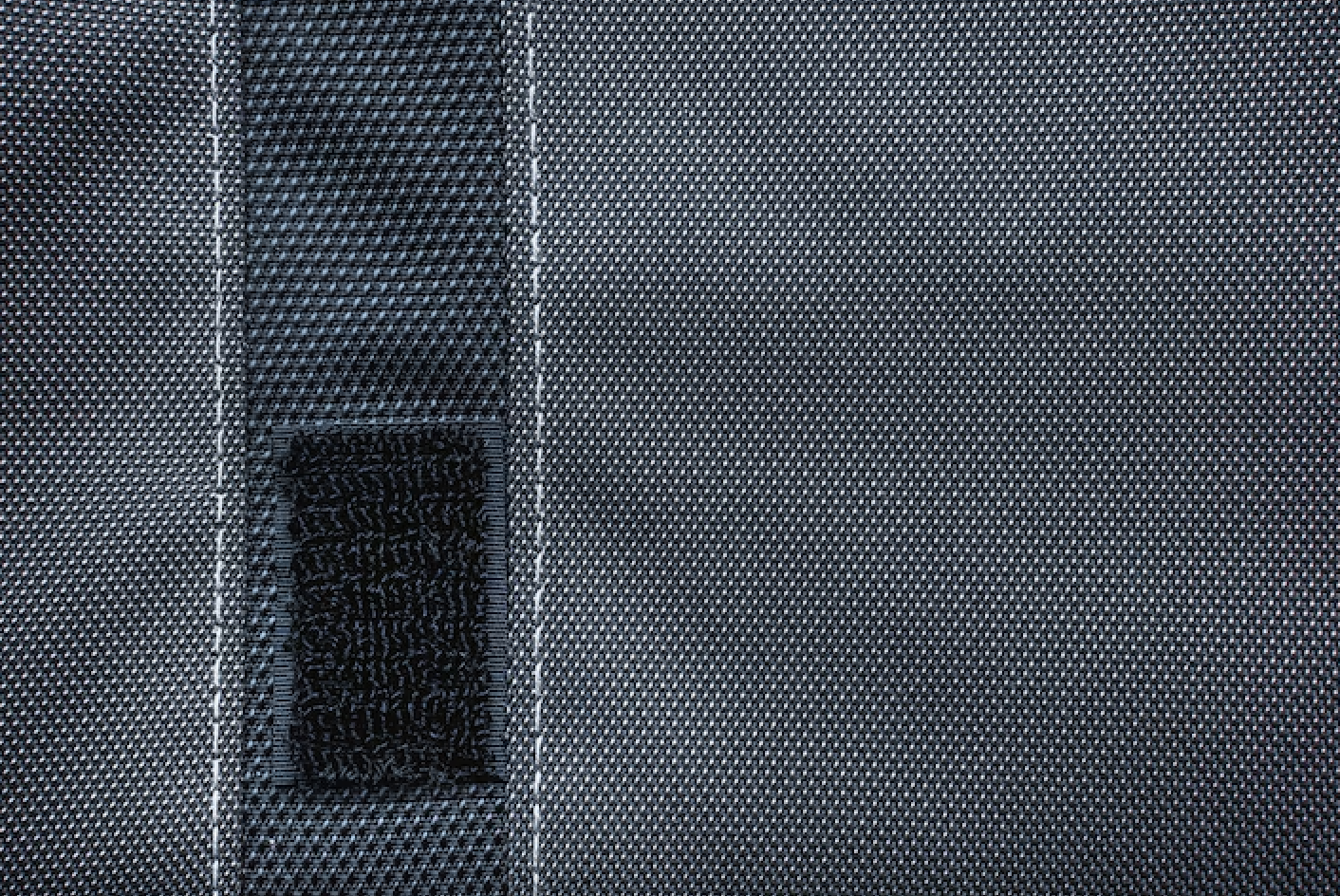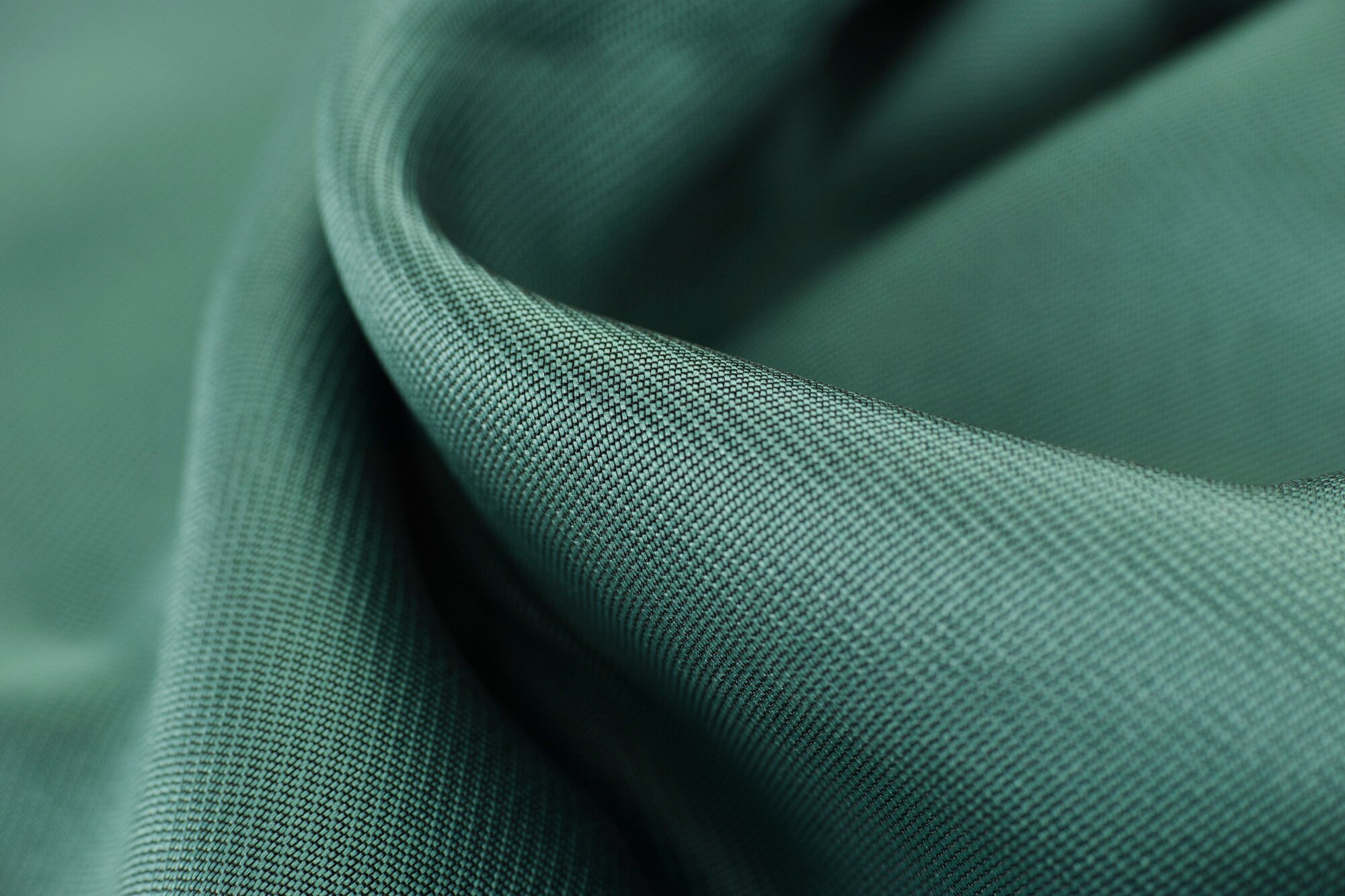More Details
When it comes to fabric, we all know that comfort is king. But fabrics like nylon and polyester are often part of the conversation, and for good reason. These popular synthetics are commonly found in everything, but many are still wondering: "do they belong in your wardrobe?" As someone being in the fabric industry for more than 30 years, let me take you through the ins and outs of these materials and help you decide if they’re worth your skin.
Read more: What is Synthetic Fabric? 5 Differences Between Natural and Synthetic Fibers
What Are Nylon and Polyester?
Alright, let’s talk about nylon and polyester. These two synthetic fibers are literally everywhere from your activewear to your everyday essentials. They have become go-tos in the fabric world, but each has its own set of strengths.
Nylon, for example, was first created as a silk alternative, and it definitely brings some serious perks. It’s super lightweight, has that smooth texture that feels great against the skin, and it's incredibly durable. That's why you’ll find it in everything from sportswear to lingerie. Nylon is great at retaining its strength, even when stretched, so it is perfect for items that need flexibility without sacrificing durability. And fun fact: it’s also more abrasion-resistant than polyester, which is why it’s often used in products like bike tires and parachutes!
Then we’ve got polyester, which is all about versatility. It’s the fabric that just doesn’t quit. Polyester is known for being moisture-resistant and quick-drying, so it’s a favorite in things like activewear, outerwear, and even bed linens. It’s a tough one I gotta say. It doesn’t shrink, it doesn’t wrinkle, and it holds up like a champ over time. Polyester also holds dye better than nylon, which is why it’s so often used in bright-colored and patterned fabrics. Plus, it's more resistant to fading under UV light, which is why it’s a solid choice for outdoor gear like jackets and bags.
Both fabrics are workhorses in the textile industry, and each has its own sweet spot depending on what you need. Nylon is your go-to for lightweight strength and smoothness, while polyester is your reliable, moisture-wicking, and durable option that’ll keep things looking fresh for years! And now, let's look at each one in details.
Nylon

Is nylon breathable?
So.... is nylon breathable? Not really, and here's why: Nylon is a synthetic fiber designed more for durability and moisture resistance than for breathability. It's great at blocking out the elements and holding up under wear and tear, but the flip side is that it doesn't allow air to flow through as easily. This means it can trap heat and moisture next to your skin, which isn't ideal when you are working up a sweat or dealing with warmer temperatures. You will probably feel a bit sticky or overheated in nylon, especially during physical activity.
And that being said, not all nylons are created equal. There are moisture-wicking variations of nylon that have been engineered to offer better ventilation and moisture control. These nylons are typically blended with other fibers, like spandex or polyester, and they help to pull moisture away from your skin and into the fabric, where it can evaporate more easily. So if you really want nylon but need to stay cool, look for those moisture-wicking versions. They will give you a bit more air circulation and keep you more comfortable.
Oh and side note, thought you might wanna know, ripstop nylon (a version of nylon that has reinforced threads woven into a grid pattern) is lightweight and has a bit more breathability than regular nylon, but it’s still not as breathable as natural fibers like cotton or linen.
Is nylon toxic?
Generally speaking, nylon isn't considered toxic in the way that certain chemicals or heavy metals might be. But! Like with most materials, there are a few things to keep in mind when it comes to its production, chemical makeup, and potential health effects. Let's break it down:
1. Chemical Composition and Production
Nylon is made from petrochemical derivatives, which means it's created using chemicals derived from oil. The process of making nylon involves polymerizing substances like hexamethylenediamine and adipic acid. Now, here's where things get a little tricky: The production process of nylon can release hazardous chemicals and pollutants into the environment. For example, caprolactam, which is used to make nylon 6, has been linked to respiratory issues and other environmental concerns. While these chemicals are mostly a concern during the manufacturing phase, it’s still something to be aware of, especially when considering sustainability.
2. Skin Sensitivity and Allergies
When it comes to wearing nylon, most people won’t experience any major issues. However, sensitive skin or people with certain allergies may have reactions. This is often more about how the fabric is finished or dyed than the nylon itself. For instance, the chemicals used in dyes or finishes can sometimes remain in the fabric and cause skin irritation, or exacerbate conditions like eczema. While nylon itself isn't inherently toxic, those chemical residues can potentially lead to reactions in a small number of people.
A little known fact from a fabric pro’s perspective: Some nylon fabrics are treated with flame-retardant chemicals or antimicrobial finishes, and while these treatments improve functionality, they can sometimes add to skin irritation risks for people with ultra-sensitive skin.
Polyester

Does polyester cause cancer?
Polyester itself isn’t directly classified as a carcinogen, but there are a few concerns tied to its production, use, and disposal that have raised questions about potential health risks, including cancer. And below we've gathered some info for you:
1. Polyester and Heat Exposure
Polyester is made from synthetic polymers, and like many synthetic fibers, it can break down when exposed to high heat (like from burning or excessive ironing). When this happens, toxic fumes like benzene and styrene can be released. Benzene, in particular, is a known carcinogen, and repeated exposure to it has been linked to increased cancer risks, especially leukemia. However, this is a concern mostly for situations where polyester is exposed to extreme heat. For example, during the manufacturing process or from improper garment care (think of overheating polyester fabrics in the dryer or on the iron). Everyday wear doesn’t carry these risks.
2. Dyes and Finishes on Polyester
Polyester fabrics are often treated with dyes and finishes to improve their appearance, texture, and performance. Some of these treatments, particularly azo dyes, can release carcinogenic aromatic amines under certain conditions. This risk is more related to poor manufacturing practices, particularly in regions with weaker regulations around textile production. The real health concerns here stem from the chemicals used in the finishing process, rather than polyester itself.
3. Cancer Risk in Polyester Clothing
For most people, wearing polyester fabrics doesn’t pose any direct cancer risk. However, individuals with sensitive skin or allergies might experience irritation, which can aggravate other conditions like eczema. But again, that’s not linked to cancer. The bigger concern comes in industrial settings, where workers are exposed to chemicals and synthetic fibers in larger quantities. The impact of plastic pollution from polyester waste is also a major environmental concern.
4. Cancer Risks in the Broader Context
While polyester itself isn’t a carcinogen, its production and disposal raise environmental and health issues that could potentially increase cancer risks over time, mainly from toxic chemicals or microplastics. Research into the long-term effects of microplastics and chemicals from synthetic fibers is still ongoing, but there’s growing concern about their environmental impact and the potential health risks that might emerge as these particles accumulate in our ecosystems and our bodies.
Does wearing polyester hurt male testosterone healthline?
While there’s no direct evidence linking polyester fabric to a drop in male testosterone levels, there are a few indirect factors that could, in theory, influence hormone levels. These are generally small or speculative concerns, but let’s dive into the details:
1. Polyester and Hormonal Disruption
Polyester itself doesn’t directly interfere with testosterone production, but synthetic fabrics, including polyester, can sometimes contain chemicals used during the manufacturing process or chemical treatments (like dyes or flame retardants). Some of these chemicals, such as phthalates and bisphenol A (BPA), are known as endocrine disruptors. These disruptors mess with your hormone systems, potentially affecting testosterone, fertility, or other hormone-related conditions.
Now, polyester isn't usually treated with those specific chemicals, but low-quality polyester blends or cheap synthetic fabrics might still have trace amounts of these substances. Consistent exposure could theoretically cause minor hormonal imbalances over time, but honestly, there's no strong evidence linking polyester directly to reduced testosterone.
2. Polyester and Heat Retention
And we all know this trait of polyester... it's not breathable. That infortunately also means it can trap heat against your skin. When you wear polyester, especially tight-fitting underwear or athletic wear, your body could sweat more, and that can raise scrotal temperature. High scrotal temperature has been linked to reduced sperm production and could, over long periods, mess with testicular function, which might indirectly affect testosterone levels.
For example, research has shown that wearing tight clothing or exposure to high temperatures for extended periods can lower sperm quality and even impact testosterone production. But don't worry, occasional wear of polyester isn’t likely to have a noticeable effect on your hormone levels.
3. Polyester and Skin Absorption
There’s some concern that chemicals in synthetic fabrics like polyester might get absorbed through the skin, but the evidence here is pretty limited. If any chemicals do seep in, it's usually a minimal amount. It would take a lot of direct contact or prolonged exposure for anything significant to happen, which again, isn’t typical for most people. The dye or chemical finishes used on polyester fabrics could potentially seep into the skin, but the absorption would be negligible.
4. Polyester and Personal Comfort
Polyester can sometimes cause skin irritation or discomfort, especially for people with sensitive skin or allergies. While this isn’t going to directly mess with testosterone, chronic discomfort or inflammation can create stress on your body, which could affect your overall hormone balance. Stress is a well-known factor in hormone regulation, so maintaining comfort and avoiding irritation is important for health, including hormone health.
5. Other Contributing Factors
It’s important to remember that testosterone levels are influenced by so many factors, including:
-
Diet and nutrition
-
Exercise and physical activity
-
Stress levels
-
Sleep quality
-
Environmental exposures (such as BPA, phthalates, and other endocrine-disrupting chemicals)
-
Age and genetic factors
Wearing polyester itself probably won’t have a big impact on your testosterone. However, heat retention, chemical treatments, and prolonged exposure to synthetic fibers could have small, indirect effects, especially when combined with other lifestyle factors. If you’re really concerned about hormone disruption, focus on things like diet, exercise, stress management, and chemical exposure. And for those looking for an alternative, fabrics like cotton, linen, or wool are more breathable and less likely to trap heat.
What feels softer, nylon or polyester?
When it comes to softness, nylon and polyester each bring something unique to the table. But if we’re talking pure softness, nylon usually takes the win. Nylon’s texture is silky and smooth, which is why it’s so comfy against your skin. It was actually developed as a silk substitute, so it has that soft, slippery feel that’s perfect for anything that sits right against the skin. The examples would be lingerie, hosiery, and sportswear. That smoothness makes it a favorite for people with sensitive skin, since it’s less likely to cause irritation compared to coarser materials.
Now, polyester isn’t rough, but it definitely has a slightly stiffer texture. The fibers are a bit coarser, so it can feel more crisp compared to nylon’s silky smoothness. Abd that being said, polyester has come a long way. Modern blends, especially those mixed with cotton or spandex, have made polyester feel a lot softer. Still, when it comes to skin feel, nylon generally wins for its cooler, smoother texture, which makes it more comfy for long-term wear, especially in sensitive areas.
How Do These Fabrics Affect Your Skin?
Both nylon and polyester are usually safe for the skin, but their impact can vary depending on your skin type and activity. Here’s the rundown:

1. Breathability and Moisture Retention
Both nylon and polyester are non-breathable compared to natural fibers like cotton or bamboo, so they tend to trap sweat. This can be a problem, especially if you’re sweating a lot, like during a workout or in hot weather. Trapped moisture can lead to rashes, itching, or even breakouts. If you’re worried about that, look for moisture-wicking versions of these fabrics. These are designed to be more breathable and keep moisture away from your skin.
2. Skin Sensitivity and Allergies
Some people might notice a bit of irritation or even mild allergic reactions from the chemical treatments used in making nylon and polyester. The dyes and finishes on these fabrics can sometimes cause redness or rashes, especially if you’ve got super sensitive skin. If you start feeling itchy or uncomfortable, try wearing a cotton layer underneath or go for hypoallergenic brands that steer clear of harsh chemicals.
3. Long-Term Wear
Wearing nylon or polyester for long periods, especially if they’re tight-fitting, can lead to heat rashes or general discomfort. That’s because these fabrics don’t let your skin breathe well. They also aren’t the best at absorbing moisture, which can cause bacteria to build up. If you’re looking for comfort all day long, it’s better to stick to cotton or other breathable materials. Save the nylon or polyester for specific activities like working out, where they shine.
So, is nylon or polyester bad for your skin? The answer really depends on your skin type, sensitivity, and personal preferences. While these fabrics aren’t necessarily harmful, they may cause irritation or discomfort in certain situations. To play it safe, I'd say opt for moisture-wicking versions, layer with natural fabrics, and always wash new clothes before wearing them.
Best Fabrics for Sensitive Skin
As a fabric expert, I’ve seen what works best for sensitive skin, and these are some of the top fabrics that have my stamp of approval:
1. Seaweed fabric
Seaweed fabric is made from a mix of cellulose fibers and powdered seaweed, and it's all about sustainability and skin health. This fabric is naturally soothing and packed with minerals that can actually benefit your skin. It even has anti-inflammatory properties, making it a gentle option for those dealing with eczema, psoriasis, or other skin sensitivities. The texture is super soft, kind of like silk or cashmere, with a smooth, cooling feel that’s perfect for direct contact with the skin. That’s why we picked it as one of the best fabrics for sensitive skin, and we even use it in baby products like strollers and car seats.
Read more: A Complete Guide to Bamboo Fabric: Sustainability, Types, Is It Toxic?
2. Recycled Cotton
Recycled cotton is made from reclaimed cotton fibers sourced from pre- or post-consumer waste, like old clothes or textile scraps. It’s a win-win for your skin and the planet! Cotton, in general, is hypoallergenic, super breathable, and great at absorbing moisture, making it a top choice for anyone with sensitive skin. The best part is that recycled cotton keeps all these benefits while being more eco-friendly. It’s soft, breathable, and airy, giving you a comfy and irritation-free feel that’s perfect for everyday wear.
3. Hemp
Hemp is a natural fiber that comes from the stalk of the hemp plant, and it’s actually one of the oldest fabrics out there, known for its strength and sustainability. It’s great for sensitive skin because it’s naturally resistant to mold, mildew, and even UV rays, making it less likely to cause irritation or allergic reactions. Plus, it’s super breathable, which keeps your skin cool and dry. While hemp might feel a bit coarse at first, it softens up with each wash. Once it’s broken in, it has this comfy, linen-like texture that’s gentle but still durable.
4. Lyocell
Lyocell, often known as TENCEL™, is a cellulose-based fiber made from sustainably sourced wood pulp, mostly from eucalyptus trees. It’s a total game-changer for sensitive skin: hypoallergenic, super breathable, and moisture-wicking, which makes it ideal if you’re prone to irritation. Plus, it’s resistant to bacteria growth, so it reduces the risk of rashes. The texture? It’s incredibly soft, smooth, and silky, with a cool touch that’s often compared to silk or bamboo. It’s perfect for direct contact with the skin and definitely one of the comfiest fabrics out there.
5. Linen
Linen is a natural fiber made from the flax plant, and it’s loved for being super lightweight, breathable, and absorbent. It’s basically a dream for anyone with sensitive skin since it’s naturally hypoallergenic and antimicrobial. That means it not only helps prevent irritation but also keeps air circulating, which reduces the risk of rashes and overheating. The texture starts out a bit crisp, but it softens with every wash. It’s lightweight and cool, making it perfect for hot weather or if you’re prone to heat rashes.
What doesn’t make into our list
As a fabric designer, supplier, and consultant, we carefully choose which fabrics we recommend, keeping both animal welfare and sustainability at the forefront of our decisions. That’s why certain materials, like recycled wool, cashmere, cotton, and silk, don’t make it onto our list. While recycled wool and cashmere might seem like more sustainable choices, they can still be linked to animal cruelty in their production processes. As for cotton, even when organically grown, it has a significant environmental impact due to its high water usage. Silk, although a luxurious fabric, involves processes that can harm silkworms, raising ethical concerns. Our priority is to suggest fabrics that are not only kind to animals but also leave a lighter footprint on the planet. We believe that choosing truly sustainable fabrics is the best way to support both ethical fashion and a healthier planet.
Read more: Sustainable Fabrics: How Eco-Friendly Are They Really?
FAQs
1. Why is my skin so sensitive to fabrics?
Your skin might be sensitive to fabrics for a few reasons:
-
Chemical Treatments: Many fabrics are treated with chemicals during production, including dyes, bleach, and finishing agents. These chemicals can linger on the fabric, potentially causing irritation or allergic reactions.
-
Synthetic Fibers: Fabrics like polyester, nylon, or acrylic can trap heat and moisture, which may cause itchiness, rashes, or irritation, especially for those with sensitive skin.
-
Rough Textures: Certain fabrics, like wool or coarse cotton, have a rougher texture that can irritate your skin, leading to redness or itching.
-
Allergic Reactions: If you have a textile allergy, you might react to specific fibers or dyes, causing skin sensitivities. Conditions like eczema or dermatitis can also make your skin more prone to reacting negatively to certain fabrics.
2. What is the most hypoallergenic fabric?
-
Organic Cotton: Organic cotton is considered one of the most hypoallergenic fabrics. It’s grown and processed without harmful chemicals, making it safer for sensitive skin.
-
Bamboo Fabric: Bamboo fabric, particularly organic bamboo viscose, is hypoallergenic and naturally resistant to bacteria. It’s soft, breathable, and moisture-wicking, which helps reduce the risk of irritation.
-
Lyocell (TENCEL™): Lyocell is made from wood pulp and is processed with fewer chemicals, making it a good option for those with allergies. It’s soft, smooth, and has moisture-wicking properties, minimizing irritation.
-
Seaweed Fabric: This innovative fabric is made from a blend of cellulose fibers and powdered seaweed, offering anti-inflammatory properties that can soothe sensitive skin. It’s naturally hypoallergenic and feels smooth like silk.
3. What fabric doesn't irritate eczema?
-
Cotton (especially Organic Cotton): Organic cotton is highly recommended for eczema-prone skin. It’s free from pesticides, synthetic fertilizers, and harsh dyes, reducing the chance of irritation. It’s also soft and breathable, helping to keep skin cool and dry, which is essential for eczema management.
-
Bamboo Fabric: Bamboo fabric is gentle, naturally antibacterial, and moisture-wicking, making it an excellent choice for eczema sufferers. It helps prevent the skin from becoming overly dry or sweaty, both of which can trigger eczema flare-ups.
-
Silk: Although silk can be expensive, it’s known for its smooth texture and hypoallergenic properties. It can be soothing for eczema-prone skin, as it doesn’t cause friction and keeps moisture levels balanced.
-
Lyocell (TENCEL™): Lyocell is another soft, breathable fabric that absorbs moisture well, making it suitable for sensitive, eczema-prone skin. Its smooth texture reduces friction, further helping to prevent irritation.
4. What fabrics do dust mites not like?
Dust mites tend to love natural fibers like cotton and wool, where they can easily burrow and thrive. But synthetic fabrics like polyester or nylon are less appealing to them, thanks to their tighter weave, which makes it harder for mites to settle in. Microfiber is another great option. Its tight weave keeps dust mites at bay, making it ideal for allergy sufferers, especially when used in bedding. Silk is also naturally hypoallergenic and resistant to dust mites, with its smooth surface making it tough for mites to cling to. Bamboo fabric is another solid choice, as it’s resistant to dust mites and mold due to its natural antibacterial and moisture-wicking properties. Plus, it’s breathable, keeping the fabric dry and less inviting for mites.

